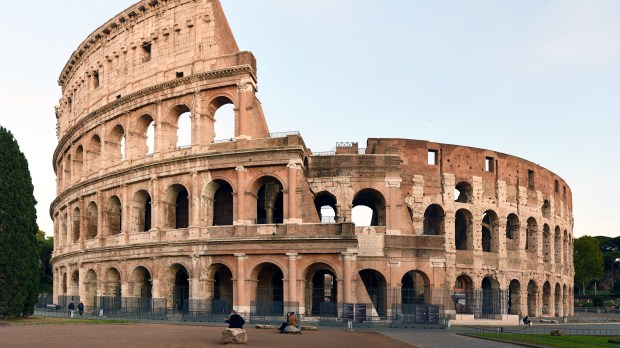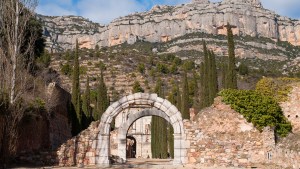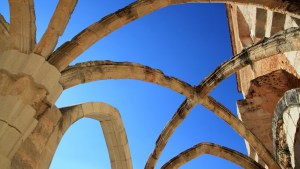The construction of the Flavian Amphiteater (the official name of the Colosseum, named after the Flavian dynasty) began in the year 70, under the rule of Vespasian. The Roman army had just sacked Jerusalem under his command as a general, and the gold they brought was used to pay for the newcircus that the emperor intended to build.
Some historians maintain that most of the slaves who were forced to work in its construction were imprisoned Jews that Vespasian enslaved before departing Judea and leaving his son Titus in charge of the siege of the city. But the nearly two-millennia-old circus was, when finished, almost twice as large as its ruins are today: The oval stadium was about one-third of a mile (half a kilometer) around, with external dimensions of 620 by 513 feet (190 by 155 meters). The approximately 160-foot (48-meters-tall) facade had three superimposed series of 80 arches and an attic story.
What happened to the other half of the Colosseum’s ruins?
The history of the Colosseum (the nickname is believed to be derived from a colossal statue of Nero that emperor Hadrian placed besides the amphitheater) is, as expected, long and complex.
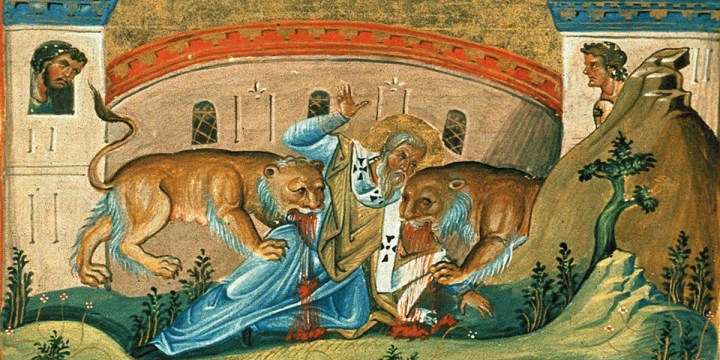
To begin with, the Colosseum was used as a circus for almost 500 years: the last games registered were held in the 6th century –almost two centuries after the traditional date of the (much debated) fall of the Western Roman Empire in 476.
Gladiatorial fights, animal hunts, executions, re-enactments of legendary battles, and even plays based on classic mythology took place in it. But once the amphitheater was no longer used for these purposes, it served as a refuge, as a factory, as the headquarters of a religious order, as a fortress and, finally as a quarry: As has happened with countless monasteries around Europe, material was often extracted from its ruins for the construction of other buildings.
Historical evidence shows it was Pope Pius VIII (whose pontificate only lasted a year, from 1829 to 1830) who began conserving the Colosseum’s ruins, as he converted it into a Christian sanctuary, to honor the captives martyred in it during the early years of Christianity.
It is true that, by the late 6th century, a small chapel had already been built into the structure of the Colosseum, but this humble homage to those early Christian martyrs did not confer any particularly important religious character to the building.
While the arena was used as a cemetery, the seating areas and underground arcades were turned into housing facilities and workshops deep into the 12th century, when a wealthy Roman family took it and turned it into their personal castle. This, until the great earthquake of 1349 caused the south side of the circus to collapse, making it look pretty much like it looks today.
Also, much of the Colosseum’sruins were reused to build plenty of other buildings elsewhere in the city.
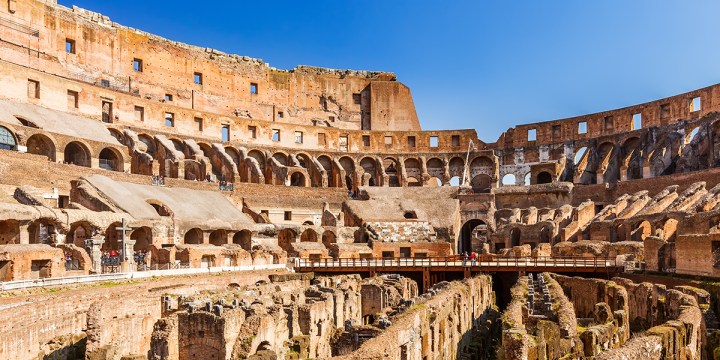
A religious order, the Arciconfraternita del SS. Salvatore ad Sancta Sanctorum, moved into the northern third of the Colosseum after the earthquake, and continued to use it until the 19th century. But that did not prevent the rest of the building from being plundered, freely used as a quarry.
Popes and other church authorities tried to give the building different uses that would help preserve it, from building wool factories to provide employment for Rome’s prostitutes, to using it as a bullfight ring.
Some historians affirm that it was Pope Benedict XIV, in 1749, who saw the Colosseum as a sacred site, forbade its use as a quarry, and consecrated the building, declaring it sanctified by the blood of the martyrs. However, there is no historical evidence to support this claim.
